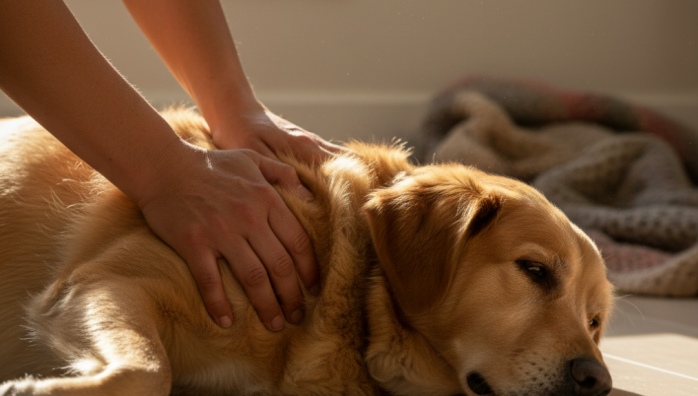Basic CPR Steps for Your Pet
by admin in Pet Care Basics 15 - Last Update November 22, 2025

I’ll never forget the sheer panic I felt years ago when a friend’s dog collapsed at the park. We were all frozen, unsure of what to do. That feeling of helplessness was awful, and it’s what pushed me to get certified in pet first aid. Knowing these skills doesn\'t make emergencies less scary, but it replaces panic with purpose. I want to share the foundational steps of CPR that I learned, not to replace a vet visit, but to give you a fighting chance to help your beloved companion in those critical moments before you can get professional help.
Before you begin: assess the situation first
Before you jump into CPR, you have to remember the \'ABCs\' of pet first aid. It’s a quick check to see what’s really going on. I always tell people to take a deep breath and go through these steps methodically.
- Airway: Is their airway clear? Gently open their mouth, pull the tongue forward, and look for any obstructions. If you see something, carefully try to remove it.
- Breathing: Are they breathing? Watch their chest for any rise and fall. You can also hold a small mirror or your phone screen near their nose to check for condensation.
- Circulation: Do they have a pulse? The easiest place to find it is the femoral artery, high on the inside of their back leg. Press gently with two fingers.
If your pet is not breathing and has no pulse, it’s time to start CPR. Please remember, this is a last-resort effort intended to keep blood and oxygen moving until you can reach an emergency veterinarian. This is what I was taught, but I always stress that a hands-on course is invaluable and you should always be on the phone with an emergency vet if possible.
The C-A-B of pet CPR: compressions, airway, breathing
Unlike human CPR which often starts with \'A\', for pets we\'re taught to start with chest compressions to get that blood moving immediately. Think C-A-B: Compressions, Airway, Breathing.
Step 1: Chest compressions
How you do this really depends on the size of your pet. This was the biggest \'aha\' moment for me during my training.
- For most dogs and cats: Have them lie on their right side on a firm surface. Place your hands over the widest part of their chest, right behind their front leg. For large dogs, you\'ll stack your hands like you would for a human. For smaller dogs or cats, you might use one hand or even just your thumb and fingers to encircle their chest.
- For barrel-chested dogs (like Bulldogs): It\'s often better to have them on their back and do compressions on the sternum, just like with a human.
The goal is to compress the chest to about 1/3 to 1/2 of its depth at a rate of 100-120 compressions per minute. A trick I learned is to pump to the beat of the song \"Stayin\' Alive\" – it’s the perfect tempo.
Step 2: Rescue breaths
After 30 chest compressions, it’s time for breaths.
- Make sure their airway is still clear.
- Gently close your pet’s mouth and extend their neck to create a straight line.
- Place your mouth over their nose, creating a seal.
- Give two slow breaths, just enough to see their chest rise. Don\'t blow too hard, especially for small animals.
- Return to chest compressions immediately.
Continue this cycle of 30 compressions and 2 breaths. It\'s physically demanding. If you have someone with you, switch every two minutes to avoid getting exhausted. Your goal is to continue CPR until your pet starts breathing on their own or until a veterinarian can take over. Never, ever delay transport to the vet to perform CPR; if possible, perform it in the car on the way there.
This is not a substitute for veterinary care
I can\'t say this enough: pet CPR is a bridge. It’s the tool you use to keep your pet\'s body viable while you are rushing to an emergency clinic. My hope is that you never have to use this information, but I’ve found that just knowing the steps provides a profound sense of peace. It turns panic into a plan, and in an emergency, a plan is everything. I strongly encourage every pet owner to look into local pet first aid and CPR certification courses. The hands-on practice is something an article just can\'t replicate, and it’s an investment in your pet\'s safety.














